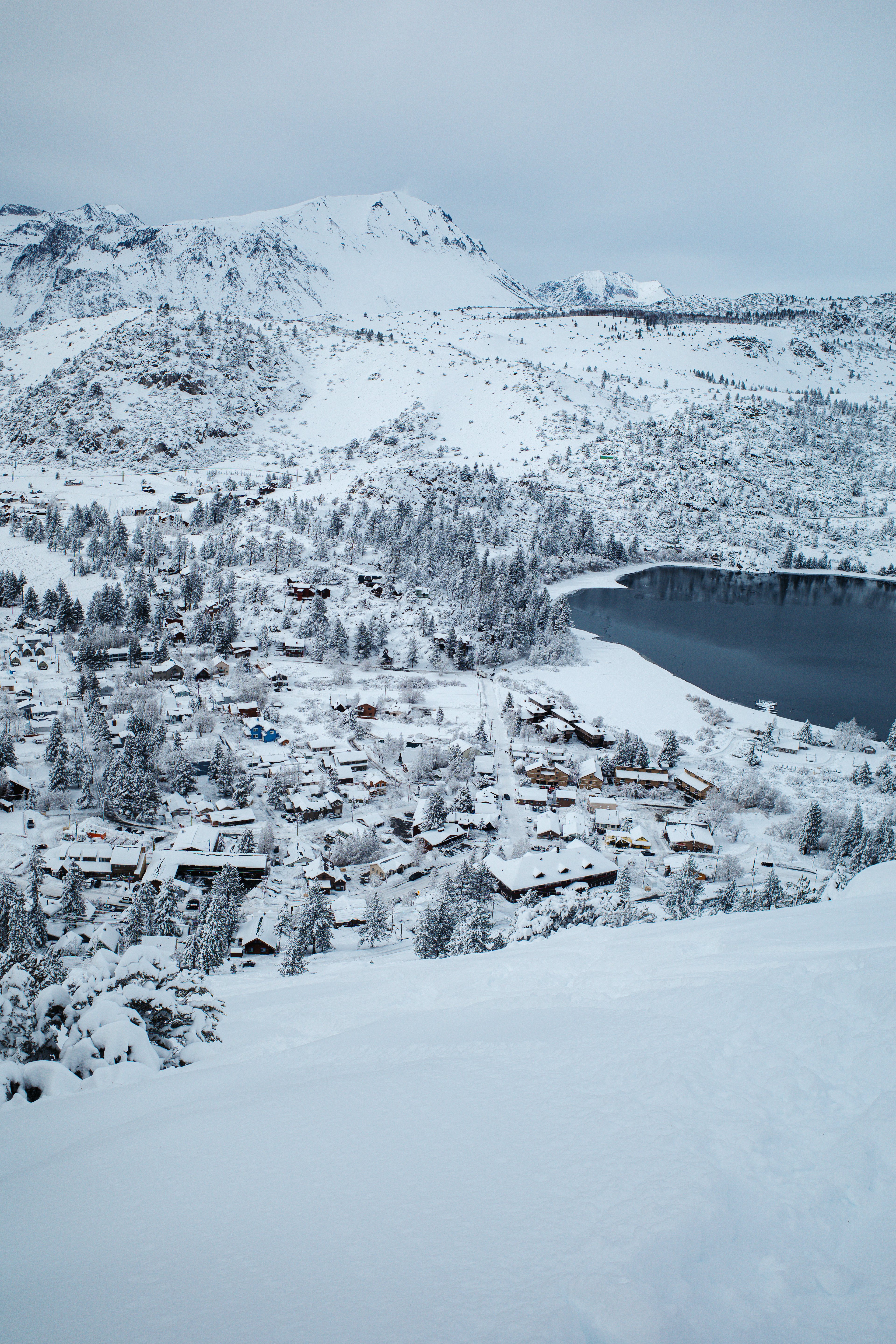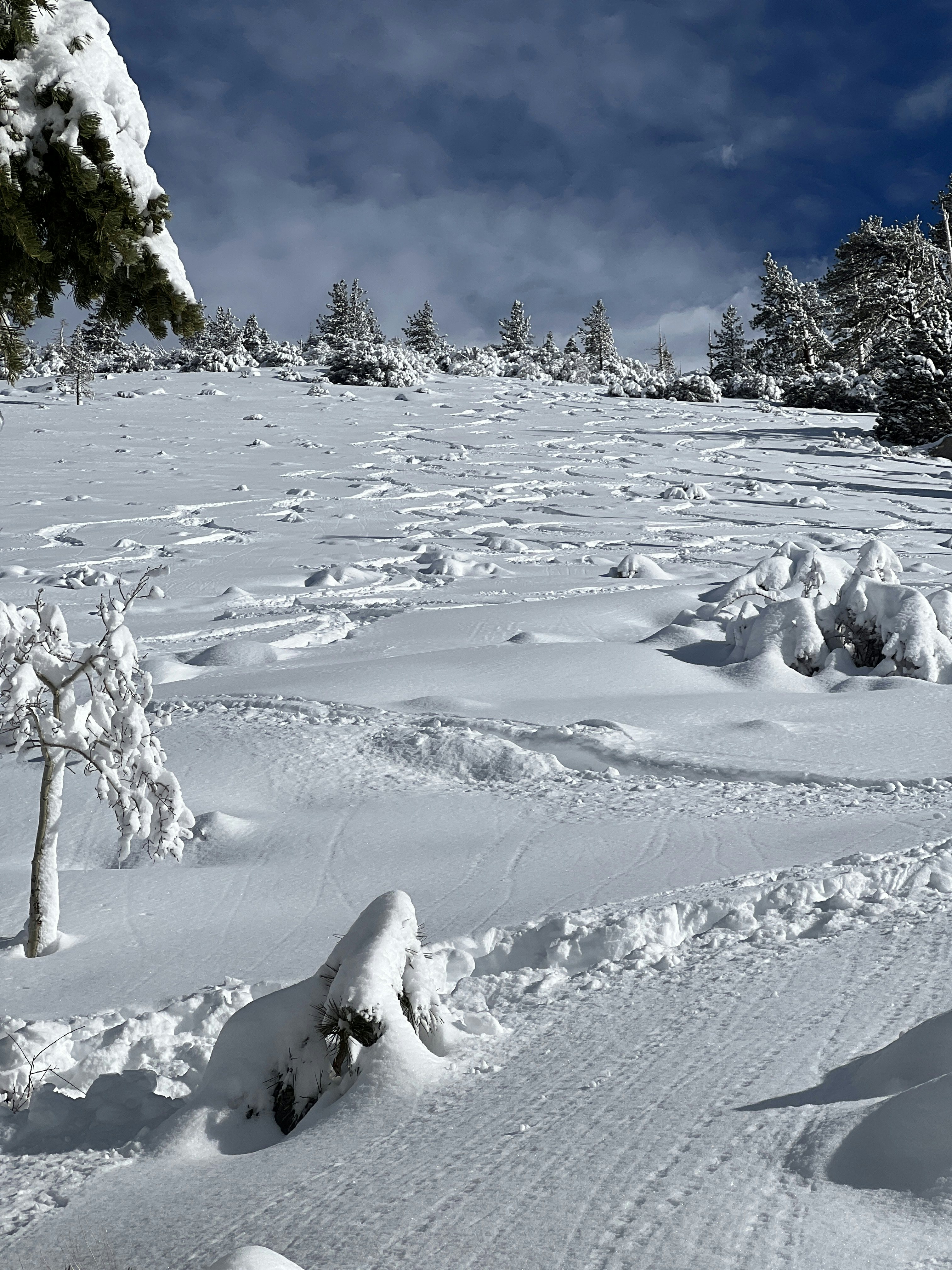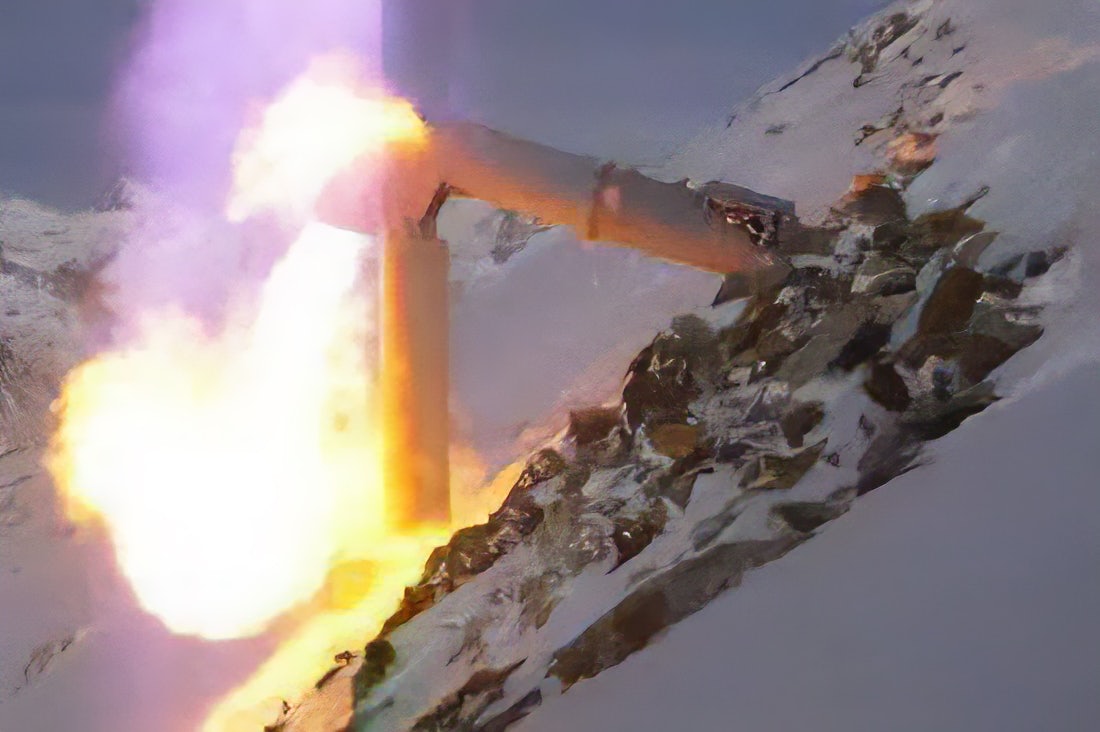I intended to write this after the snow had melted. Until the winter felt truly over. But sitting here now on my couch, writing this in late October, I can see snow almost a year old out my window on surrounding peaks.

I’d been living over the summer in June Lake, an alpine town of four-hundred in the Eastern Sierra, and knew the winters could get intense. About three-hundred inches is the average—it sounded astronomical. Talking to neighbors after moving in calmed the nerves.
“Yeah, it’s hard for maybe a week total each year, after big storms move through, but generally easy.”
The house cantilevers off a forty-five degree slope. A door at street level leads to a dark storage area beneath the primary floor. Cords of wood are stacked floor to ceiling, enough to heat the place through the winter.



The first snow system of substance drops several inches the evening of November 2nd. Every few days a few more inches accumulate. The ski resort twenty minutes south, Mammoth, opens a week early on the 7th.
Having never skied before, now seems the time to learn. Backcountry ski touring is goal—a way of staying active when snow blankets the trails, and means of gaining access to fresh snow each day.
This winter is unique. Warm, wet tropical air moves in off the coast and hits the Sierra crest. Atmospheric rivers. Rain is rare in the winter. Temperatures are cold, but these pockets of air are relatively hot. Sometimes it rains when the leading edge passes through, creating an upside-down, unstable snow pack.
When this happens I get a call in the morning from my new friend, Chris, who works for Mono County. “Hey bud, things are looking pretty unstable and loaded. We’re issuing a mandatory evacuation.”
My street, line with around ten houses, is one of only three streets in Mono County to receive mandatory evacuations. Last week a few houses were taken out down in Aspendell in similar conditions.
Not wanting to be the ultimate kook and die of an avalanche asleep in bed, evacuating seems reasonable. A neighbor down the house mentioned sleeping with their avalanche transceiver strapped to their chest, backcountry snow shovel next to their bed. “If you don’t hear from me tomorrow, start digging.”
When evacuations are ordered I call up a few friends who work at local hotels. My favorite is located across the main road—the 158. From the couch on the second floor rooms I can see my house, and the bald sloped snowy face behind it. Not wanting to be in the house if it goes, I sure would want to watch from relative safety from across the street. What a show.
In total, I evacuate five times over the winter—the longest period for almost a full week.
The 158 leads from the 395 and through the horseshoe shaped glacial moraine called the June Lake Loop. Driving westbound into town, the road passes Mount Downs. It’s not particularly astounding compared to the jagged fourteen-thousand foot peaks ahead. But there is one avalanche prone steep gulley.
Thankfully, the California Department of Transportation has placed a series of Gazex systems within the gulley. Metal tubes jut out of the mountainside, fill with natural gas, and are then ignited. The blast produces an acoustic shockwave, triggering unconsolidated snow to slide and stabilizing the chute.


Sitting on my couch one night, snow falling outside the windows, the entire loop lit up like the afternoon sun was out. Massive booms shook the house a few minutes later. Impressive.
This process prevents a naturally occurring slide from potentially sweeping a car, carrying a powder hungry family, down a cliff and onto the ice-covered surface of June Lake—thank heavens.
Once a week over a three week period an atmospheric river system would bring rain and heavy, wet snow. With another system only a few days out, and the hassle of clearing the road after each storm, CalTrans simply left the 158 unplowed, blocked at the east and west gates.


When this happened in the past the town became entirely cut-off. There is no hospital—emergency vehicles were stranded either inside outside, along with everyone else.
A road was proposed, and then constructed in the late 1990s, leading around the north shore of June Lake from the entrance to the ski resort and bypassing the Gazex closures.
This makes life easier, but doesn’t solve all the problems.
While the North Shore route around the avalanche chute off Mount Down helps, it transportation challenges remain. Large systems also tend to shut down the primary north-south artery of the eastern Sierra—El Camino Sierra, also known as the 395. On these days the North Shore leads to a dead end, and the June Lake Loop is again entirely cut-off.
These were some of my favorite days of the winter.


Snow is unstable after a storm. It doesn’t like rapid loading. That could be a person skiing, natural rockfall, or simply rapidly deposited snow. It needs time to settle, discouraging skiing immediately after a big dump.
Waking up on mornings when the highway is closed is the best. Your eyes open to the sun peaking up over the ridgeline, bombs echoing off cliffs at the ski resort—only a quarter-mile from doorstep to lift for me.

June mountain is unique. Only a small ticket office sits adjacent the parking lot. A single chair—wooden, with room for only two—takes you from the parking lot to the main chalet, where the rest of the mountain is accessed. Something more common in Europe, but unheard of in the states.
The ride takes about 13 minutes—anything but high-speed—giving you plenty of time to take in the scene, and make small talk when sharing the open seat.

On the biggest days, only this first chair at June Mountain spins. But this is fine by me. The terrain is all steep stuff, double black, and endless fun.
These days are spent lapping the first chair with maybe 10 other June locals, and a handful of tourists who make it out of the hotel room. 4:00pm rolls around and there’s still plenty of undisturbed lines to be had the next morning. It’s magic.
After each snow storm, and handful of snow plows begin clearing roads. Some are pickups fitted with plow attachments for clearing parking lots at hotels. The county brought in a few smaller wheel loaders.
But the biggest, baddest loader is a bright orange Hitachi ZW-310, driven by a kid who goes by Murt. He absolutely rips up and down main street, both forward and in reverse, in white-out blizzards, neck craned backward to reduce the chance of crushing any cars, or at least get a good look at them if he does.


I ran outside when I saw him shutting down the loader for the day. A Mercedes S Class, parked in front of the post office, had the entire side ripped off. It’d been sitting tarped up for about a week. “Did you see that car that got torn up on main?” I asked. “Oh, yeah.” “It was a Mercedes S Class!” “Wait, that was a Mercedes?”
He looks like he just got his driving permit. Fresh face, rosy cheeks. The dinosaur of a machine makes him look even smaller.
Some kids have a dog, but Murt has a Hitachi ZW-310.
The road the house sits on hadn’t been plowed in over a week. The slope in the backyard was too unstable to plow, the county was afraid it’d set off a slide.
Walking to the coffee shop at the end of the street, head down to ensure stable steps in the fresh snow, walking became more difficult. I was walking uphill. Looking up, it became clear the hill had slid overnight. Not a huge slide, but enough to leave a runout across the road.

Looking around, the slide managed to take out a neighbor’s gate, and push all the trashcans quite a ways down the hill. A berm piled up almost past the second floor of the their house.
Later that evening some friends came over.

“Right, park at the end of the street, because my road isn’t plowed. Climb over the berm, it’s pretty tall, maybe 16ft. Walk about 100 yards and then you’ll climb up and over the avalanche runout. A little ways further and you’ll have to duck through a snow tunnel and up the stairs to my door.”

